Fine Finishing with HVLP Spray Systems
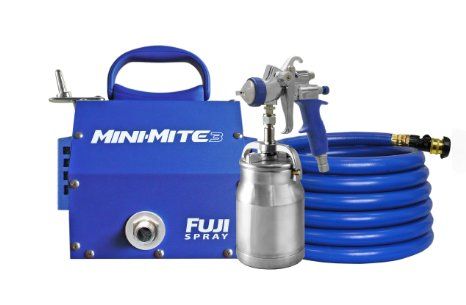
Maintaining the intricate depth of wood grain can sometimes be difficult. Once sanded, this subtle contouring can disappear beneath coatings more than 3 or 4 mm thick. Most woodworkers begin with a water based polyresin, lacquer, or paint that has been thinned sufficiently enough to accommodate this goal. DIY enthusiasts utilize brushes or rags for this purpose. Professionals woodworkers who began experimenting with HVLP systems, (when expensive high-end models were procured only by accomplished craftsmen), report achieving exceptionally fine wood finishing results when using the right HVLP paint sprayer. Now that top HVLP manufacturers are producing HVLP models priced for the DIY market, it might be time to reexamine this technology.
Professionals list HVLP’s Top Attributes as:
● Freedom from Expensive Compressors
● Predictable and Adjustable Control
● Increased Accuracy and Airbrush-like Simplicity
● Consistent Results
What exactly do these professionals mean by the right HVLP system?
1. Systems with at least three conveniently located controls:
a. Flow control knob (amount of product delivered through gun)
b. Pattern control knob (vertical, horizontal, circular)
c. Fan spray size control knob (1″ to approximately 14″)
2. Systems that provide the ability to adapt to differing materials:
a. A marriage of needle-head/needles/aircap sizes that accommodate differing viscosities
b. Easily cleanable guns that encourage switching between materials
c. Control over both volume and pattern size when utilizing differing viscosities.
d. Staged turbine motors that can handle both heavy and light materials
3. Quality spray guns that are ergonomically comfortable and last the long haul:
a. Quality components that can be easily cleaned
b. Sufficiently pressurized cup
c. Tiltable gravity cup (that permits spraying in any direction)
d. The ability to set down or hang the gun when not in use
e. Logical disassembly and reassembly
f. Ergonomic, comfortable design
4. Reasonably-priced replacement parts for emergencies:
a. Cup Components: [Cap gaskets, Internal filters, Check valve pressure hoses]
b. Needle Heads: [Varying needle sizes and their needle heads] (1 mm for stains, 1.5 mm for poly materials, 1.8 mm for thinned latex and furniture grade paint, 2.0mm for thicker materials).
c. A choice of cup styles [gravity feed or bottom feed]
d. Flexible hoses and varying lengths of hoses
e. Motor filter replacements
f. Production Accessories: Filling stand, remote control, filters, etc.
Professionals Dispel Misconceptions:
1) “No spray gun can handle every material”
a. Progressive HVLP manufacturers have devised systems with interchangeable needles and heads that make the task of switching from paints to finishes less challenging
b. Professionals recommend that you learn about viscosity and “test” your settings on butcher paper prior to spraying your projects.
2) “Paints are difficult to dilute properly”
a. Professionals have reviewed varying brands of latex paints and report that dilute amounts range anywhere from 5% to 18%, depending on the brand of paint and the needle size. Viscosity cups are helpful when determining whether the mixture is the right consistency. Although it takes some experimentation with both the dilute properties and the flow control; none of the professionals reporting on high-end HVLP systems had difficulties applying latex paints – even with the standard size needle supplied upon purchase.
b. Some of the most enthusiastic professional reviews come from:
1) Craftsmen who apply lacquer and use poly products on pianos, guitars and other musical instruments in varying viscosities
2) Artists who utilize HVLP for miniature landscaping, (Dioramas and Terraforms), using a variety of stains, paints, and resin-like finishes.
3) Those who facilitate tub resurfacing using liquid resins.
4) Professional contractors and woodworkers who work with paints, lacquers, shellacs, stains, and waterproofing materials.
3) “The noise will drive me crazy”
a. Professional woodworkers describe the noise generated by these machine as “less grating” than the sound of a table or jig saw.
b. Some of the tactics used to combat the noise (and to prevent motor filters from attracting excess materials), is to place the motor outside the workspace and turn it on and off remotely. (You can purchase a remote controlled plug through the manufacturer or at hardware stores).
4) “I won’t be able to keep my work room clear of fumes and overspray”
a. High-end HVLP systems produce negligible amounts of overspray
b. Your workspace (or garage) will not resemble an auto body shop; nonetheless, hanging drop cloths and floor drop cloths can help catch excess materials
c. Placing hepa filters at the front of box fans helps clear particulates from the air
d. The proper use of drop cloths helps dispel materials that would otherwise need to be filtered through an exhaust system
In a six-part YouTube series, professional carpenter Rickafix (YouTube Name) remodels an entire kitchen; beginning with cabinets he describes as “pressboard oak veneer from the 80s.” He envisions the wall-mounted cabinets in black; but does not want the smooth laminated look so common to modern black cabinets. By using a gravity fed HVLP system with adjustable flow, width control, and vertical and horizontal patterning, (in this case, the Fuji Minimite 4), he achieves this goal beautifully. How did he do it? He began by applying KILZ Max as a primer, (with his HVLP system), and painting each door with Benjamin Moore’s Advanced paint, diluted by only 10% (for smooth delivery through the HVLP system). He used a narrow vertical spray pattern to catch the edges; and a wide pattern to apply each of the three coats of paint, (waiting between each until the previous coat was thoroughly dry). The results are so impressive that by the 3rd video he can’t stop holding up the cabinet doors so the camera can capture the richly textured wood grain. (These stills are captured from his 1st, and 3rd videos which can be found at this link).
Now that HVLP manufacturers are providing models priced around $400/$500 for DIY enthusiasts, they are worth re-investigating.


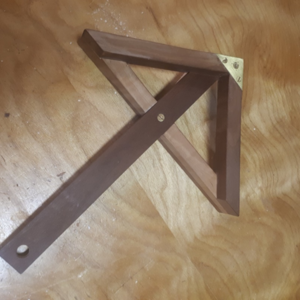
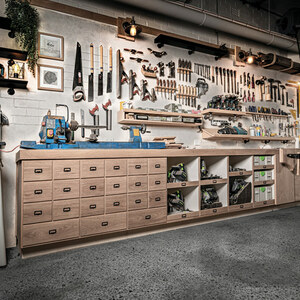
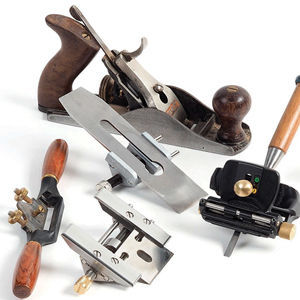
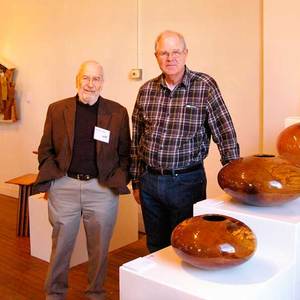












Comments
I have both a low end and (just recently purchased) high end HVLP system. The low end unit is fine for spraying thin materials such as polyurethane, shellac, and lacquer, but it won't spray thicker paints. I have only used the high end unit once (sprayed lacquer), but it is a world of difference in the quality and power (as it should given it cost over 4 times the price of the low end unit). I also have one of the hand held airless units. It's OK for painting small to medium size projects (e.g. a picnic table), but it uses a LOT of paint.
Log in or create an account to post a comment.
Sign up Log in